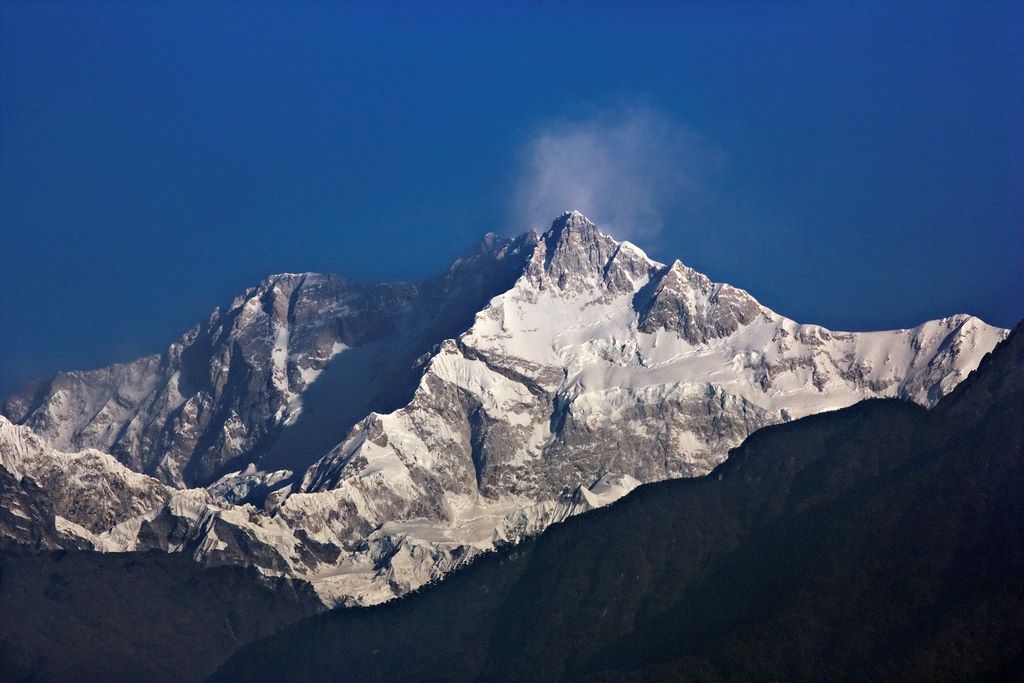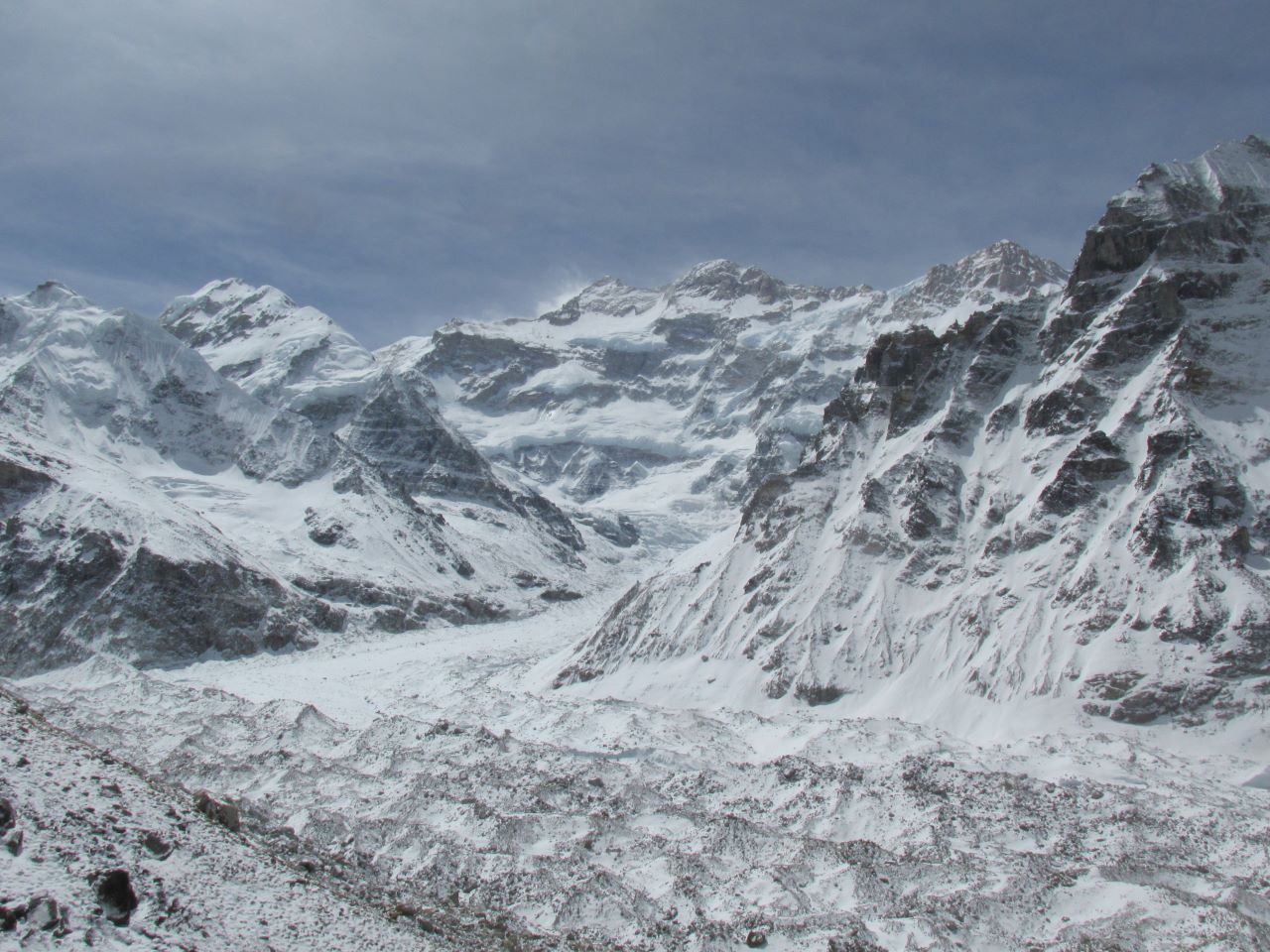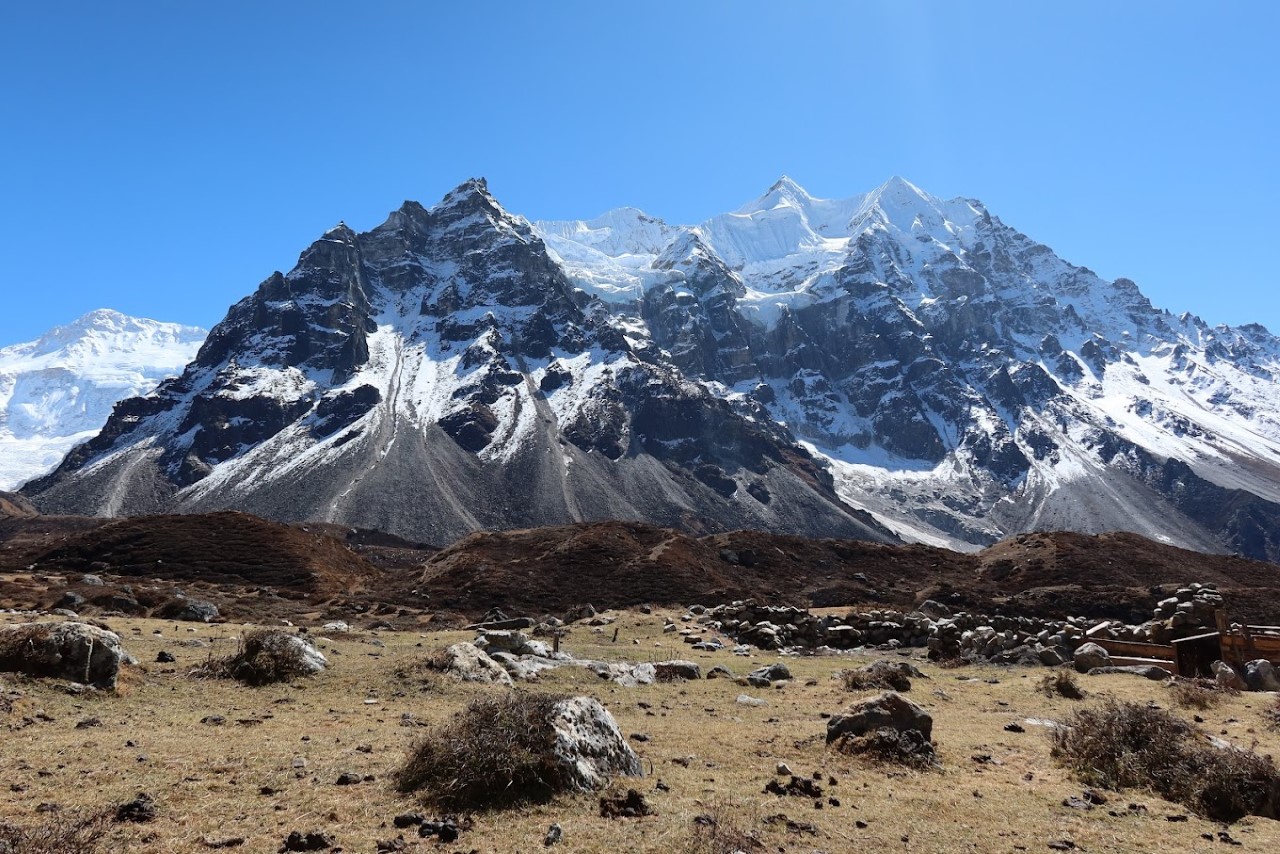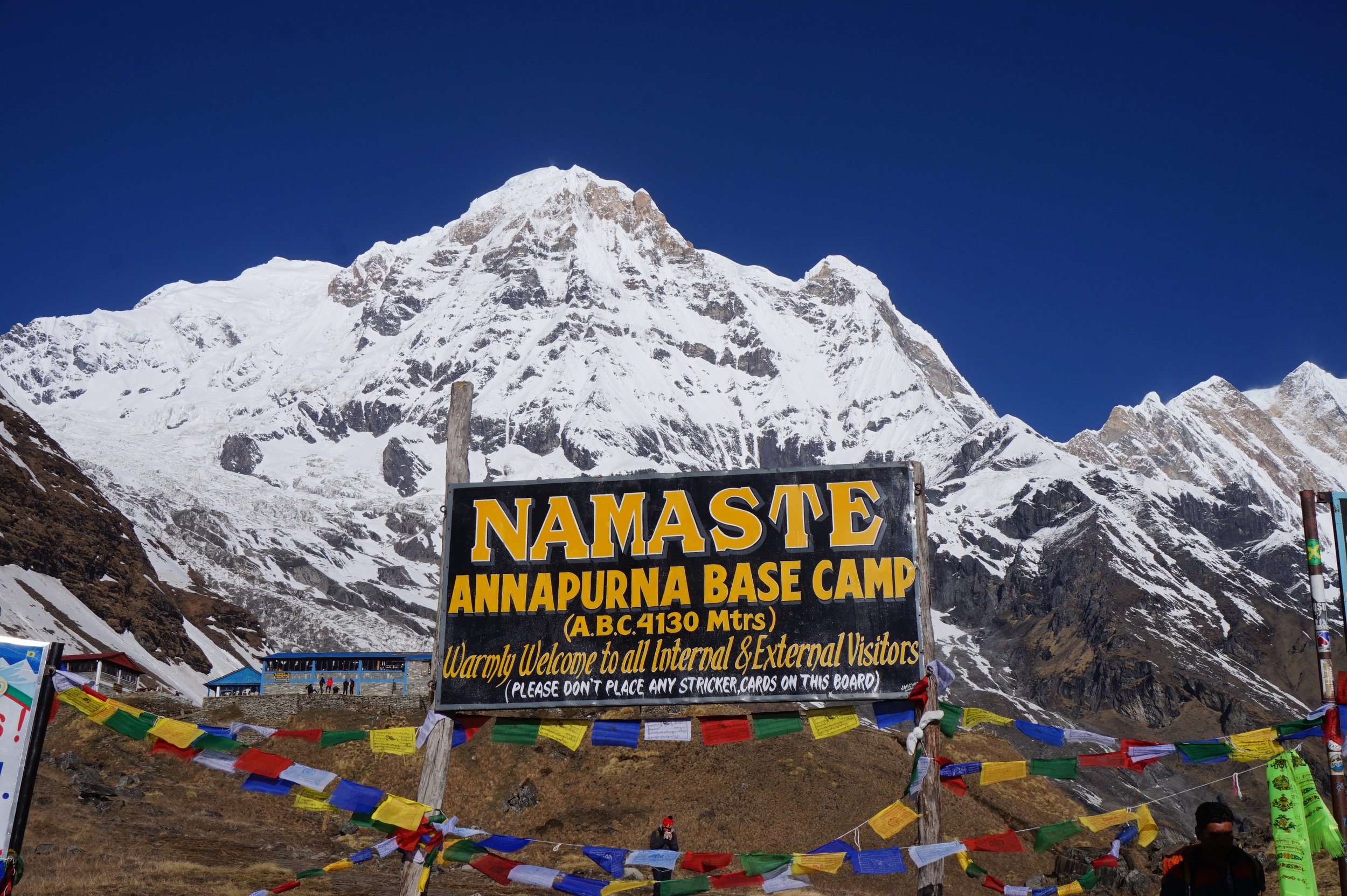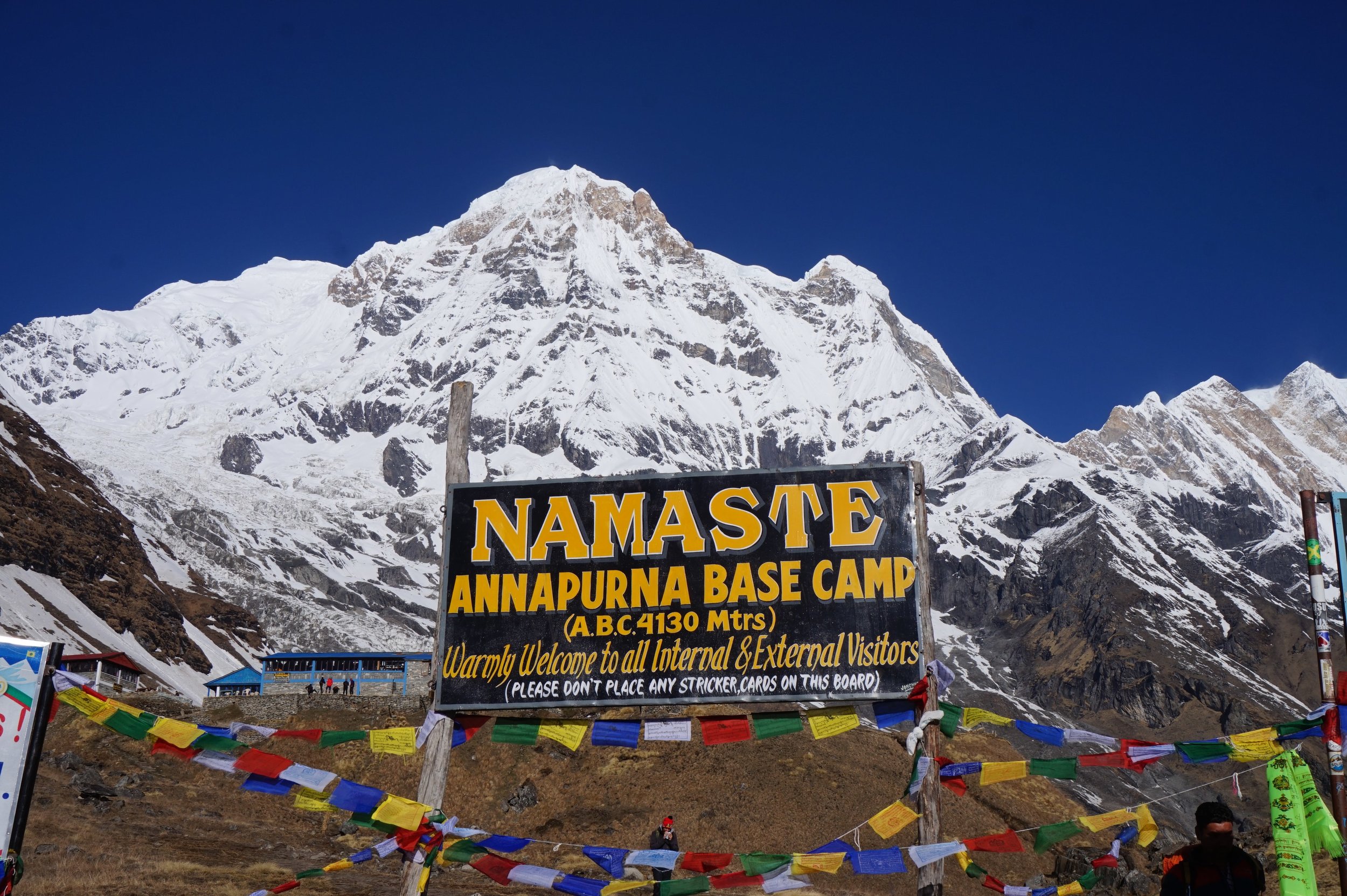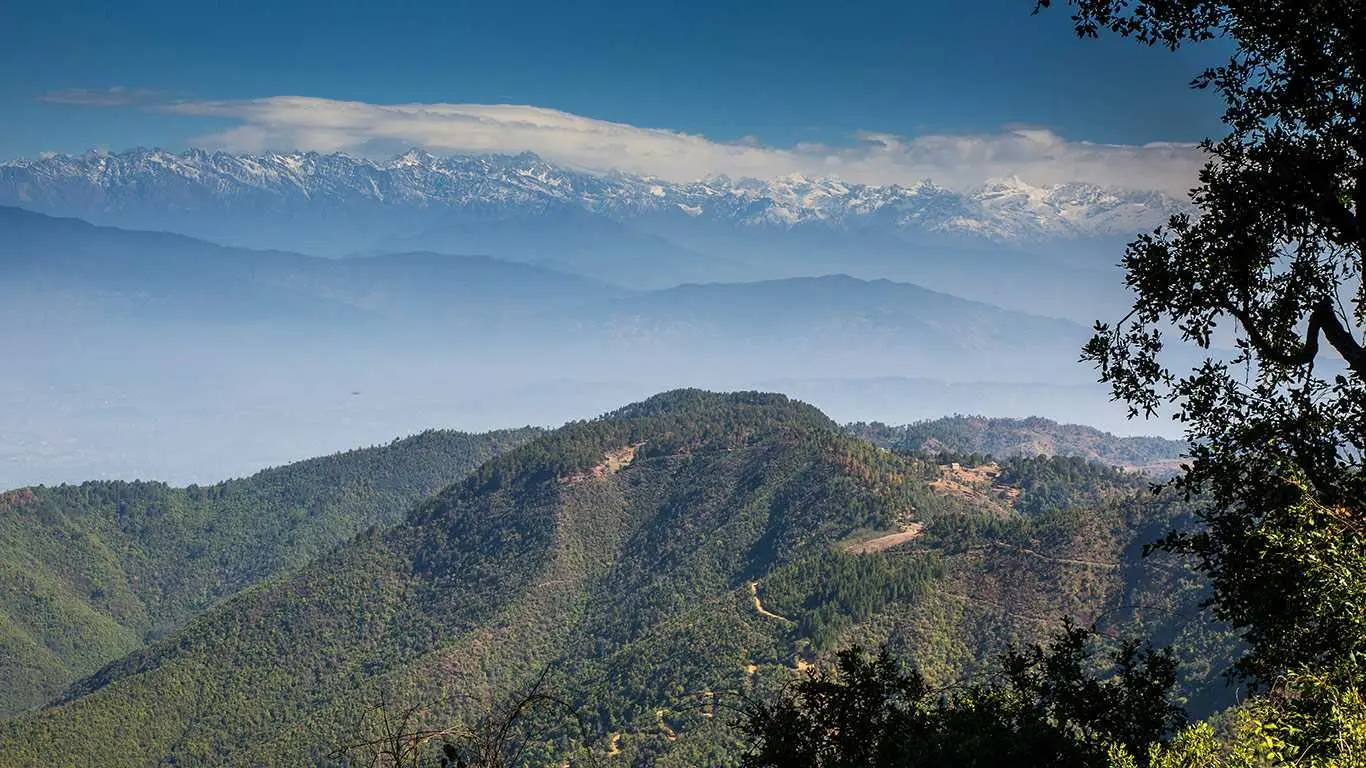Kanchenjunga Base Camp Trek 25 Days
 Destination:
kanchenjunga Base Camp
Destination:
kanchenjunga Base Camp
 Trip Difficulty:
Moderate
Trip Difficulty:
Moderate
 Food:
Breakfast + Lunch + Dinner
Food:
Breakfast + Lunch + Dinner
 Accomodation:
Tea house and Lodge/Camp/Hotel
Accomodation:
Tea house and Lodge/Camp/Hotel
 Max Elevation:
5143m.
Max Elevation:
5143m.
 Trip Area:
Kanchenjunga
Trip Area:
Kanchenjunga
 Total Duration:
25
Total Duration:
25
KANCHENJUNGA BASE CAMP TREK
"Kanchenjunga: Create Memories That Will Last a Lifetime."
"Discover the majestic Kanchenjunga, the world's third-highest peak, straddling the border between Nepal and Sikkim, India, a region steeped in breathtaking beauty and spiritual significance. This remote trekking destination, accessible from Nepal since 1950 and commercially since 1988, offers an unparalleled adventure for nature enthusiasts and trekkers seeking solitude. The geographical location of Kanchenjunga, with its five peaks, including Main, Central, South, West, and Kangbachen, creates a diverse landscape that contributes to its unique ecosystem and cultural richness. The area's high rainfall fosters a vibrant environment, home to rare wildlife and distinctive flora, making it a designated conservation zone. Exploring Kanchenjunga allows you to immerse yourself in a pristine Himalayan wilderness, away from the more frequented trails."
"Embark on a transformative journey through the Kanchenjunga region, beginning at 2200m and gradually ascending to 5143m at the base camp. The trek traverses diverse landscapes, including steep gorges, lush grazing lands near authentic Sherpa villages, and the powerful Tamur and Ghunsa rivers. This trail leads to the iconic Kanchenjunga Glacier, where panoramic views of towering peaks like Pyramid Peak, Jannu, and Kanchenjunga create a sense of awe and tranquility. The region's unique ecosystem supports elusive wildlife, such as the snow leopard and red panda, alongside Himalayan black bears and Assamese macaques. The cultural richness of the area, inhabited by the Rai and Limbu ethnic groups, enhances the trekking experience, providing insights into local traditions and lifestyles. This region offers a true wild experience."
"Continue your adventure past the impressive 300m Yalung Glacier, navigating valleys and icy ridges to reach the Southern Kanchenjunga Base Camp, the starting point for early mountaineering expeditions. The remoteness of the region ensures fewer tourists and a more profound connection with nature. From the raging rivers to the high-altitude glaciers, the trek offers a vast array of landscapes, creating lasting memories. The journey culminates in unparalleled views of Kanchenjunga, leaving you with a sense of peace and insignificance in the face of these Himalayan giants. This unforgettable trek through Kanchenjunga provides a unique opportunity to experience the raw beauty and tranquility of one of the world's most spectacular mountain regions."
Highlights of the Kanchenjunga Base Camp Trek :
- Kanchenjunga: World's Third Highest Peak: Explore the majestic Kanchenjunga and its surrounding snow-capped giants.
- Kanchenjunga Base Camps (North & South): Trek to the iconic North and South Base Camps for unparalleled views.
- Yalung Glacier Trek: Experience the breathtaking beauty of the Yalung Glacier.
- Panoramic Himalayan Views: Witness stunning vistas of Mt. Makalu and the east face of Mt. Everest during your trek.
- Diverse Natural Landscapes: Discover pristine rhododendron forests, unique alpine vegetation, and scenic mountain passes.
- Cultural Immersion: Encounter Tibetan refugee settlements and the warm hospitality of Sherpa, Rai, and Limbu communities.
- Remote Himalayan Adventure: Trek to a remote and less crowded area of the Himalayas.
Detail Itinerary
"When you arrive at Kathmandu Tribhuvan International Airport, Jia Cheng Travel and Tours staff will meet you and escort you to your hotel. You will then receive a briefing about the Kanchenjunga trek, the hotels and lodges along the way, and important guidelines."
 Meals:
Lunch/Dinner
Meals:
Lunch/Dinner
 Accommodation:
3 star hotel
Accommodation:
3 star hotel
 Max. Altitude:
1400
Max. Altitude:
1400
 Place:
kathmandu
Place:
kathmandu
"Today's guided sightseeing tour of Kathmandu Valley includes visits to several significant cultural and religious sites. We'll explore Pashupatinath, Nepal's most sacred Hindu temple dedicated to Lord Shiva, located on the Bagmati River; Bouddhanath, a prominent Buddhist temple often called 'Little Tibet'; and Swayambhunath, also known as the Monkey Temple. Our tour concludes at Kathmandu Durbar Square, a UNESCO World Heritage Site situated before the old royal palace. After returning to your hotel, you may have some free time for last-minute shopping in Thamel. Your guide will then assist you with trek preparations at the hotel."
Today we will pick you up from your hotel and take you to the airport for your flight to Bhadrapur and then we will drive to Suketar, a seven to eight-hour drive. We will stay overnight at Suketar.
Today our trek begins with a relatively relaxed four to five-hour hike through lush forests and finally on to Lali Kharka Village where we stay the night.
After an early breakfast we follow the trail that ascends to Simbu Village and then have a steep ascent to Kande Bhanjyang Village. Along the trail we pass through several small village and forested areas before reaching Kande Bhanjyang Village where we stay the night.
Today’s trail takes us up a steep hillside passing terraced farmlands situated high above Kabbeli Khola (river). The trail is undulating, passing through valleys and across hillsides. We will stop for lunch along the way and after lunch pass through Anpan Village before descending to c Kashawa Khola (river) which we cross and then begin climbing up through the fields until we reach Phumphe Danda Village where we stay overnight.
The trail today follows the contours of the hillside above the Kabeli Khola (river), traversing small rivers and valleys. There are several great places to stop and take a dip in the river as we follow it until reaching Yamphudin Village. We will also stop beside the river for lunch. We will stay at Yamphudin in a guest house tonight.
Our trail today leads us through cooling forests and along the way offers amazing views of the Himalayas. The trail follows the Amji Khola. Further down the trail we cross Lassiya Bhanjyang Pass before reaching Tortong where we will stay the night in a guest house.
We start today by following the trail next to the river, passing through lush rhododendron and conifer forests. The trail descends rather rapidly down to the valley of the Simjua Khola (river). We then climb to the base of the Yalung Glacier and through valleys until we find a good campsite for the night. The trail today takes us near-frozen alpine lakes, across crystal clear rivers and offers magnificent views of Koktang, Rathong, and Kabru peaks. Tonight we will sleep soundly due to the physical exertion at these higher
Today we have our first close up view of Mt. Kanchenjunga. Soon after beginning our trek we will have impressive views of the south face of Mt. Kanchenjunga and Jannu. After spending the morning at Ramche we head to Yalung Ri Glacier and to Oktang. From this altitude we have breath-taking views of the surrounding mountains, especially the towering east face of Jannu Peak. Tonight we stay here in a guest house.
Again we begin by climbing higher as we head to Yalung Base Camp. Crossing these high altitude passes requires a good energy level and fine weather. The trail is more difficult but more rewarding as the views become more spectacular, especially of the stunning Mt. Kumbakarna (Jannu), Nyukla Lachung, and other nearby Himalayan snow-clad peaks. We will stay here overnight in a guest house.
Along the trail we continue to have awesome views of Yalung Glacier, a frozen lake, and numerous lush valleys. Tonight we stay at Tsheram in a guest house.
The trail heads down into the valley and along the way pass the trail that leads to the physically demanding Lapsang La Pass trail to Ghunsa and the north side of Kanchenjunga. This pass is dangerous, so we will head across the southern passes crossing Mirgin La Pass. At the beginning it is a steep ascent to reach the pass. On reaching the pass we have fantastic panoramic views of Jannu, and further away in the distance Mt. Makalu, Gyakung Kang, Everest, Lhotse, and Chamalang. Today’s trek will take about six to seven hours and will leave you tired and ready for a good night’s sleep at our campsite tonight.
Our trek today descends through pine and rhododendron forests until we reach Ghunsa, the last village in the valley. Ghunsa is a charming Tibetan village with many wooden houses displaying fluttering prayer flags. Ghunsa has two monasteries that are worth a visit. Tonight we stay at Ghunsa in a guest house.
The trail today ascends to the south of Ghunsa Khola (river) crossing the broad river flats until we reach the elevated pastures on the north banks of the river. Along the trail we have magical views of. Mt Jannu. Once we arrive at the small Tibetan village of Kambachen we find ourselves surrounded by mountains. Tonight we stay here in a guest house.
Our trail crosses a rocky landscape until we reach Ramtang Village (4240m) then crosses to the northwest of the Kanchenjunga Glacier before reaching Lhonak, situated on a sandy plain with magnificent mountain views surrounding us. Tonight we will find a sheltered area to set up our tents in this arid windswept region.
Kanchenjunga peak is only visible from Pang Pema, the base camp for mountaineers wanting to climb Kanchenjunga. The trail ascends across the arid plain but very quickly gets steeper as we traverse the moraine. Tonight we stay at a guest house at Pang Pema.
An early morning climb of about 200 to 300m up a ridge north of Pang Pema offers magical views of Kanchenjunga, Wedge Peak, the Twins, and Tent Peak. We will then head back to Kambachen where we will stay in a guest house for the night.
After an hour’s trek we descend to Phale, home to several monasteries and juniper forests until arriving at a grassy hillside where the tiny village of Amjilosa lies. We stay here in a guest house tonight.
The day begins with a short climb and then a steep descent for the remainder of the day. At the beginning of our trek we can see a waterfall cascading form the mountains. Out trail leads to the junction of the Tamur and Ghunsa Kholas (rivers) and finally to Sakathum where we stay in a guest house for the night.
Our trek begins with a crossing of the Simbu Khola, a river with its origins at Kanchenjunga’s south base camp. The temperature is warmer at these lower altitudes. We cross a number of small streams before reaching Chirwa, a small village set among large boulders. Tonight we stay here at a guest house.
The trail today passes through more lush forests with unique examples of various flora and fauna. Our trek today lasts for about eight to nine hours before we reach the quaint village of Taplejung where we stay in a guest house overnight. On our way, we can witness a lush forest filled with flora and fauna. About 8-9 hours of long walk we reach to a picturesque village, Taplejung, where we stay in a guest house overnight.
The nine to ten hour road trip takes us through many small valleys and through villages until we reach Bhadrapur where we stay in a guest house for the night.
Today we have a 45-minute scenic flight back to Kathmandu and have our final glimpses of the majestic snow-covered mountains. Sherpa Expedition and Trekking will take you back to your hotel.
Your adventure comes to an end today – but your memories will last a lifetime! Our company representative will take you to the airport approximately 3 hours before your scheduled flight. On your way home you'll have plenty of time to plan your next adventure and explore the most magnificent mountains of Nepal.
Trip Map
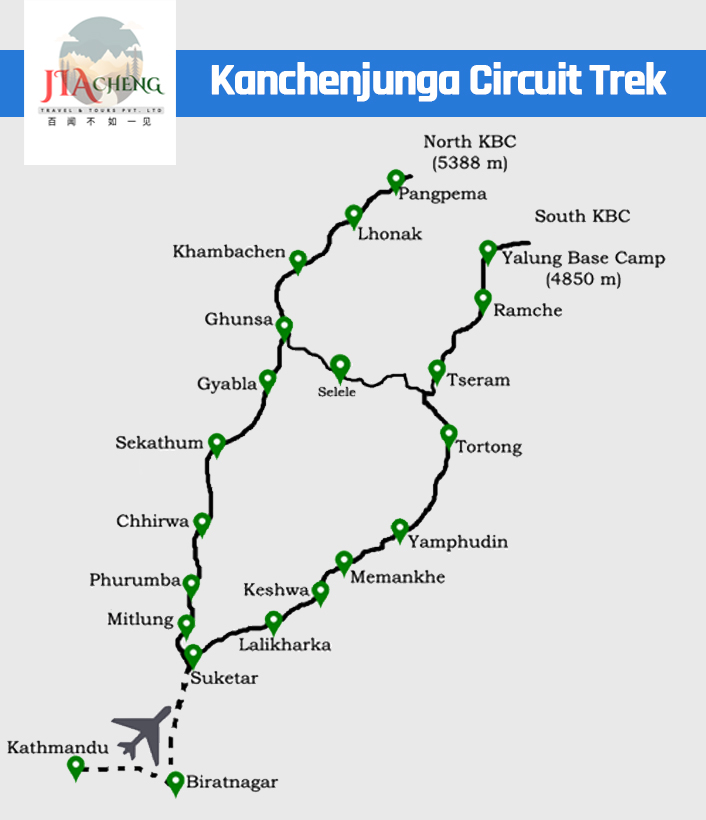
What's Included
- Private airport transfers for stress-free arrival and departure.
- Three nights of hotel stay in Kathmandu, with daily breakfast.
- All meals (breakfast, lunch, dinner) provided during the trek.
- Shared jeep transport for regional travel to and from trekking points.
- Accommodation in tea houses or tents along the trekking route.
- Management of all necessary trekking permits and paperwork.
- Round-trip flights between Kathmandu and Bhadrapur, with airport transfers.
- Experienced, English-speaking guide for a safe and informative trek.
- Support from reliable Sherpa porters, one per two trekkers.
- Comprehensive first-aid supplies and emergency helicopter arrangements.
- Provision of essential trekking gear: sleeping bag, down jacket, etc.
- Complimentary trekking t-shirt as a souvenir.
- Inclusion of all government taxes and official fees.
- Guided sightseeing tour of Kathmandu with private transportation.
- Daily oxygen level monitoring to ensure altitude safety.
- Assistant guide for larger groups of eight or more.
What's Excluded
- Meals in Kathmandu (lunch and dinner) are not included.
- Nepal entry visa fees are separate (available on arrival: $30 for 15 days, $50 for 30 days, $125 for 90 days).
- Personal travel and medical insurance is required and not included.
- International airfare is not included.
- Personal spending is your own responsibility.
- All alcoholic and non-alcoholic beverages, extra food, and drinks purchased during the trek are not included.
- Desserts and sweet items are not included.
- Hot showers and battery charging at tea houses are extra.
- Tips for guides, porters, and drivers are customary and not included.
- Kathmandu sightseeing monument entrance fees ($30 USD per person) are not included.
- Excess baggage fees for Bhadrapur flights (over 20kg) are not included.
- Early trek returns due to illness or other issues result in no refunds for prepaid services (flights, hotels, etc.), and you will bear all subsequent Kathmandu expenses.
Additional Info
Essential Equipment & Travel Information
Trekking Gear & Equipment Checklist
Proper preparation is key to ensuring a comfortable and safe trekking experience. Below is a comprehensive list of essential gear you’ll need for the Manaslu Circuit & Tsum Valley Trek. Avoid unnecessary items to keep your backpack light while ensuring you have all the necessities.
General Essentials:
- Sleeping Bag & Down Jacket (Available for rent but must be returned after the trek)
- Duffle Bag (Provided by Sherpa Expedition & Trekking, to be returned after the trek)
- Wind & Waterproof Jacket (Essential for cold mornings and high altitudes above 3,000m)
- Daypack (For carrying daily essentials during the trek)
Upper Body – Head / Ears / Eyewear:
- Half gloves for trekking poles
- Warm hat covering the ears
- Sunglasses with UV protection
- Neck warmer
- Sunscreen (SPF 35-60)
- Headlamp with extra batteries
Hands:
- Half gloves for additional grip with trekking poles
- Warmer shell gloves with liners
Upper Body Clothing:
- Long sleeve T-shirts
- Thermal tops for layering
- Wool jacket or fleece pullover
- Sports bras (for women)
- Windproof and waterproof shell jacket
Lower Body Clothing:
- Thermal underwear (especially for high altitudes)
- Windproof and waterproof trekking pants
- Warm trekking trousers
- Comfortable trekking pants
- Extra casual pants for the teahouse stays
Footwear:
- High-quality waterproof trekking boots
- Lightweight sandals for teahouse stays
- 4-5 pairs of warm woolen socks
- Sock liners for added comfort
- Light shoes or sneakers
First Aid & Medications:
- Assorted adhesive bandages (fabric preferred)
- Blister treatment
- Anti-itch or insect ointment
- Ibuprofen or pain relievers
- Diamox (for altitude sickness prevention)
- Wound coverings, bandages, and splints
- Water purification tablets or filters
(Note: Our guides carry first aid kits, but having your own kit is recommended.)
Miscellaneous Essentials:
- 4 passport-size photos with an original passport
- Reusable water bottle & filter
- Copy of flight details (Leave a copy at our office in Kathmandu for emergency changes)
- Personal toiletries (toilet paper, plastic bags, wipes, towel, soap, etc.)
- Trekking poles for support
- Energy snacks & dried food (optional but useful for extra energy)
- Power bank & music player
- Camera with extra memory cards and batteries
Manaslu Circuit & Tsum Valley Trek – Good to Know
Accommodation:
Teahouses and lodges along the Manaslu Circuit & Tsum Valley Trek offer basic but comfortable accommodation. Most teahouses provide simple rooms with shared bathrooms, while some lodges may have private rooms with attached bathrooms. In remote areas, expect rustic accommodation with limited facilities.
Food & Meals:
Local teahouses serve a variety of meals, including traditional Nepali dishes such as Dal Bhat (rice and lentils), as well as international options like pasta, noodles, and soups. It is recommended to eat hot, cooked meals and carry snacks or energy bars for long trekking days.
Drinking Water:
Staying hydrated is crucial at high altitudes. Bring a reusable water bottle and use water purification tablets or filters to ensure safe drinking water. Bottled water is available at teahouses, but using a refillable bottle is a more eco-friendly choice.
Physical Fitness & Preparation:
The trek is physically demanding, involving long walking hours, steep ascents and descents, and high-altitude trekking. Prior trekking experience and good physical fitness are highly recommended. To prepare:
- Engage in regular cardio exercises (hiking, running, cycling)
- Strength training and endurance exercises
- Practice walking with a loaded backpack to simulate trek conditions
Best Time to Trek:
The ideal seasons for the Manaslu Circuit & Tsum Valley Trek are:
- Spring (March to May): Pleasant weather, blooming rhododendrons, and clear mountain views.
- Autumn (Mid-September to November): Stable weather, clear skies, and comfortable temperatures.
Trekking in winter (December-February) is possible but challenging due to extreme cold and snowfall at higher altitudes. The monsoon season (June-August) brings heavy rain and landslides, making the trail less accessible.
Transportation:
The trek begins in Arughat Bazaar, accessible by road from Kathmandu. Options include:
- Private Jeep Hire (Faster and more comfortable)
- Public Bus (Budget-friendly but time-consuming)
The trek typically ends at Besisahar, from where trekkers can take a bus or private vehicle back to Kathmandu.
Guide & Porter Services:
Hiring a guide and porter is highly recommended for:
✅ Navigation & Route Guidance – Trails in Tsum Valley can be tricky.
✅ Cultural Insights – Learn about Tibetan traditions, monasteries, and history.
✅ Safety & Altitude Awareness – Guides monitor altitude sickness symptoms.
✅ Porters Ease Your Load – Allowing you to enjoy the trek without carrying a heavy backpack.
Ensure that your guide and porter are licensed, experienced, and well-equipped for the trek.
Solo Trekking:
Solo trekking on the Manaslu Circuit & Tsum Valley route is not permitted due to safety regulations. Trekkers must be accompanied by a licensed guide and obtain a special trekking permit through a registered trekking agency.
Reviews (0)
Customer Reviews & Ratings
0.0 / 5.0
Based On 0 Reviews
5
0
4
0
3
0
2
0
1
0
Send an Enquiry
Why Book With Us
-
✔
Expert Guides with Local Knowledge
-
✔
Personalized Itineraries and Customization
-
✔
Safety and Comfort at Every Step
-
✔
Affordable Prices with No Hidden Fees
Need Assistance?
If you have any questions about this trek, feel free to contact us. Our travel experts are happy to assist you 24/7.
Contact Us